Revamp Your Indian Garden with Vibrant Blooms: How to Use a Color Wheel to Select Flowers for Your Garden
As a gardener, you know that the beauty of your garden lies not only in the selection of flowers but also in the color scheme. A well-planned color scheme can transform your garden into an extraordinary masterpiece. Colors can evoke different emotions and set the mood of your garden.
Using a color wheel can be a great way to select the perfect combination of colors for your flower garden. In this blog post, we’ll walk you through how to use a color wheel to create beautiful and vibrant blooms in your Indian garden.
Understanding Color Wheel Basics
Before we dive into selecting colors for your garden, let’s review some color wheel basics. A color wheel is a tool that organizes colors in a way that helps you create color schemes. The traditional color wheel has three primary colors (red, yellow, and blue) and three secondary colors (green, orange, and purple). Additionally, there are six tertiary colors, which are created by mixing a primary color and a secondary color.
There are different types of color wheels available, but for gardeners, we recommend using a basic one with the primary and secondary colors. A color wheel is divided into warm colors (red, orange, and yellow) and cool colors (blue, green, and purple). Warm colors are energizing and create a sense of excitement, while cool colors are calming and soothing.
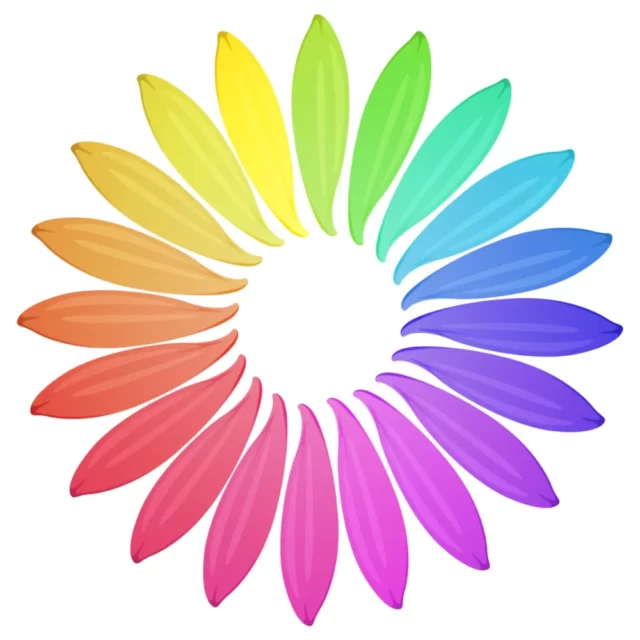
Choosing a Color Scheme for Your Garden
Now that you understand the basics of the color wheel, it’s time to choose a color scheme for your garden. There are several color schemes you can choose from, including monochromatic, complementary, analogous, triadic, and tetradic.
1. Monochromatic Color Scheme
A monochromatic color scheme involves using shades of the same color. For example, you can use different shades of pink, red, or purple in your garden. This scheme is easy to execute and creates a cohesive look.
2. Complementary Color Scheme
A complementary color scheme involves using colors that are opposite each other on the color wheel. For example, red and green, yellow and purple, or blue and orange. This scheme creates a striking and bold look.
3. Analogous Color Scheme
An analogous color scheme involves using colors that are next to each other on the color wheel. For example, red, orange, and yellow, or purple, blue, and green. This scheme creates a harmonious and calming look.
4. Triadic Color Scheme
A triadic color scheme involves using three colors that are evenly spaced on the color wheel. For example, red, yellow, and blue. This scheme creates a balanced and vibrant look.
5. Tetradic Color Scheme
A tetradic color scheme involves using four colors that are two sets of complementary colors. For example, blue, orange, yellow-green, and red-violet. This scheme creates a complex and sophisticated look.
Using Color Schemes in Your Garden
Once you’ve chosen a color scheme for your garden, it’s time to put it into action. Here are some tips to help you incorporate your color scheme into your garden:
- Think about the height and structure of your plants. Consider using tall plants in the back and shorter plants in the front to create a layered look.
- Use different shades of your chosen colors to create depth and interest.
- Consider adding a pop of a contrasting color to create visual interest.
- Use foliage as well as flowers to create a cohesive look.
- Consider the colors of your hardscape elements, such as benches, walls, and paths, and choose colors that complement them.
Blue Garden Beds
If you’re looking for a unique and eye-catching color scheme for your garden, then consider creating a blue garden bed. Blue is a calming and soothing color that’s perfect for creating a relaxing and tranquil garden.
To create a blue garden bed, start by selecting flowers in shades of blue. Some popular blue flowers include hydrangeas, delphiniums, and bluebells. You can also use white and purple flowers to create a complementary or analogous color scheme.

Using Color Height Transition Garden
Another important factor to consider when selecting flowers for your garden is their height. By choosing flowers of different heights, you can create a sense of depth and dimension in your garden.
To create a color height transition garden, start by selecting flowers of different heights. Place the tallest flowers at the back of your garden bed, and the shortest flowers at the front. This creates a gradual transition of height that makes your garden look fuller and more vibrant.
Green Earth – Your Partner in Gardening
At Green Earth, we offer a wide variety of flowering plants and shrubs that can add color to your Indian garden. we’re also committed to sustainable and eco-friendly gardening practices. That’s why we offer a wide range of organic and eco-friendly gardening products, including compost, fertilizers, and pest control solutions.Our experts can help you choose the perfect plants for your color scheme and provide tips on how to care for them. Visit us
Transform Your Shady Garden with These 8 Evergreen Shrubs for Indian Climates: A Gardener’s Guide to Year-Round Greenery !
Do you have a shady garden that feels dull and lifeless? Don’t worry, you can transform it into a lush green oasis with the right selection of evergreen shrubs. These plants can add greenery, texture, and structure to any garden, providing year-round interest even in full shade. In this guide, we’ll discuss the top 8 evergreen shrubs for shade in Indian climates that are perfect for your garden.
1. Boxwood: A Shade-Loving Evergreen Shrub with Small, Dense Leaves
Boxwood is a versatile evergreen shrub that thrives in the shade. This shrub has small, dense leaves that can be pruned into various shapes and sizes, making it perfect for hedges and topiaries. Boxwood is also low-maintenance, which makes it ideal for busy gardeners.
2. Holly: A Popular Evergreen Shrub with Spiky Leaves
Holly is a classic evergreen shrub that is popular for its shiny, spiky leaves. It can add texture and structure to any garden, and it can thrive in full shade. Holly is also low-maintenance and can be used as a hedge or as a standalone plant.

3. Camellia: A Popular Evergreen Shrub with Showy Flowers
Camellia is a classic evergreen shrub that is popular for its glossy green leaves and showy flowers. The flowers bloom in winter, making it an excellent choice for adding color to your winter garden. Camellia is also low-maintenance and can thrive in full shade.
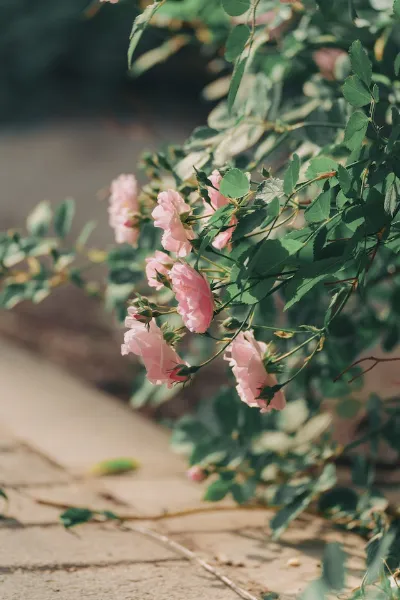
4. Mahonia: A Shade-Loving Evergreen Shrub with Spiky Leaves and Yellow Flowers
Mahonia is a shade-loving evergreen shrub that has spiky leaves and clusters of yellow flowers that bloom in winter. It can add a splash of color to your winter garden and is low-maintenance. Mahonia can thrive in partial to full shade and can grow up to 6 feet tall.
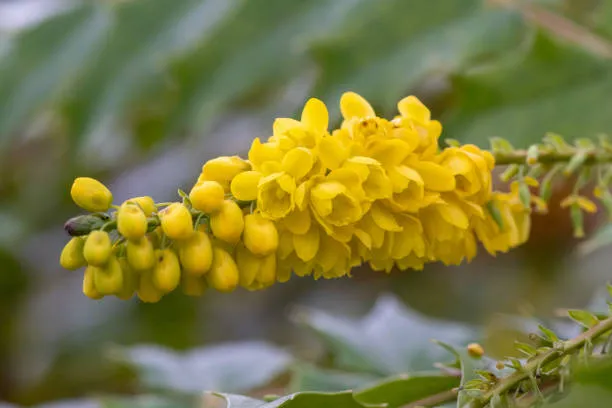
5. Daphne: A Shade-Loving Evergreen Shrub with Fragrant Flowers
Daphne is a beautiful evergreen shrub that is perfect for shady gardens. It has fragrant flowers that bloom in winter and early spring, adding a delightful fragrance to your garden. Daphne is also low-maintenance and can add a splash of color to your garden even in full shade.

6. Mahonia: A Shade-Loving Evergreen Shrub with Spiky Leaves and Yellow Flowers
Mahonia is a shade-loving evergreen shrub that has spiky leaves and clusters of yellow flowers that bloom in winter. It can add a splash of color to your winter garden and is low-maintenance. Mahonia can thrive in partial to full shade and can grow up to 6 feet tall.

7. Nandina: A Low-Maintenance Evergreen Shrub with Red Berries
Nandina is a low-maintenance evergreen shrub that is perfect for shady gardens. It has lacy foliage and red berries that can add color to your garden. Nandina can thrive in full shade and can grow up to 6 feet tall.
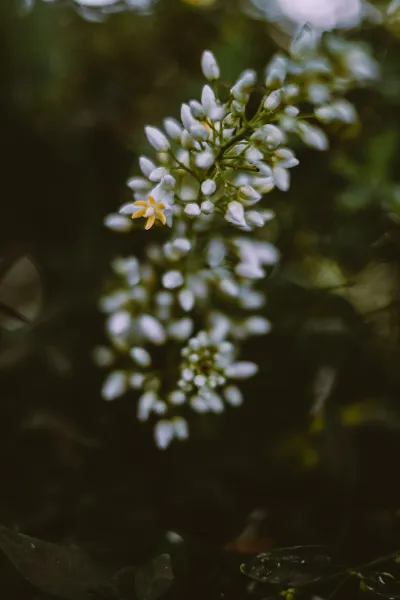
8. Skimmia: A Shade-Loving Evergreen Shrub with Fragrant Flowers
Skimmia is a shade-loving evergreen shrub that has fragrant flowers and glossy leaves. It can add a delightful fragrance to your garden and is low-maintenance. Skimmia can thrive in partial to full shade and can grow up to 6 feet tall
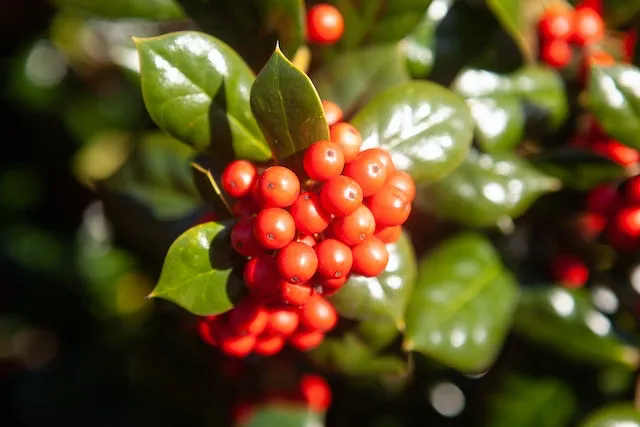
Choosing the Right Evergreen Shrub for Your Shady Garden
When selecting evergreen shrubs for your shady garden, there are a few things to keep in mind. First, consider the amount of shade your garden gets. Full shade evergreen shrubs will need a different set of requirements than partial shade evergreen shrubs.
Second, consider the soil type and drainage in your garden. Some evergreen shrubs prefer well-draining soil, while others can tolerate moist soil.
Third, consider the height and spread of the shrub. You don’t want to choose a shrub that will outgrow its space in a few years.
Green Earth – Your One-Stop Nursery for Evergreen Shrubs
At Green Earth, we understand the challenges of landscaping a shady garden, and that’s why we offer a wide range of evergreen shrubs that can thrive in Indian climates. Our exclusive variety, Green Earth, is specially developed to provide year-round greenery and is perfect for shade-loving gardens.
So, transform your shady garden with our 8 top picks for evergreen shrubs for shade in Indian climates. Visit our nursery and start your green journey today





